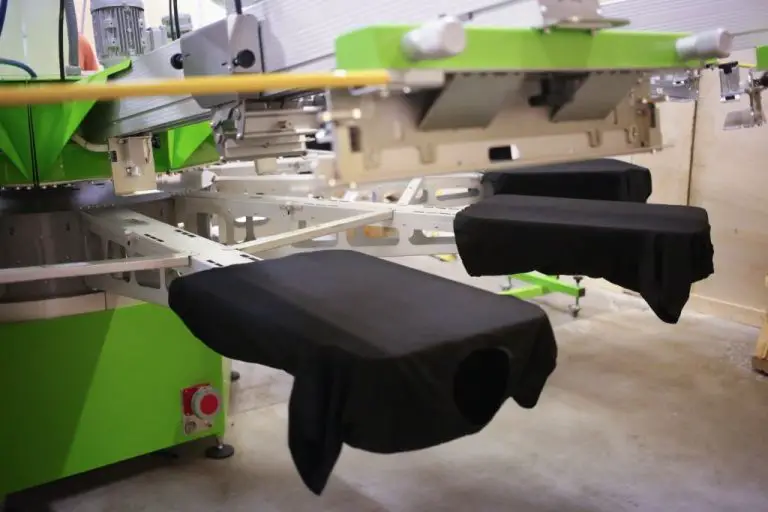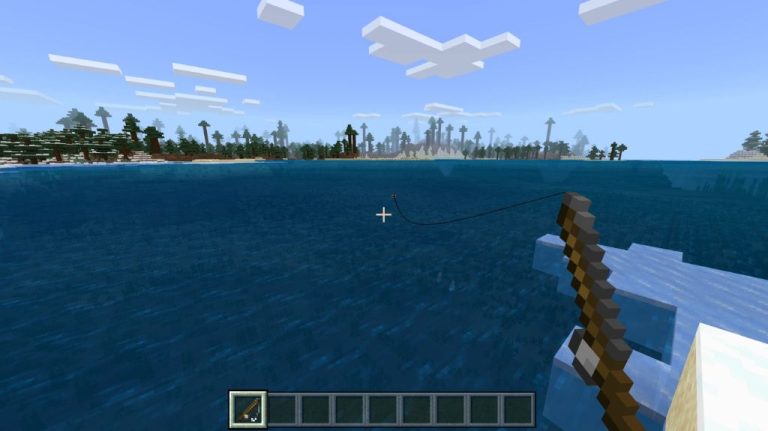How Do You Keep Air Dry Clay From Sticking To The Bowl?
What is Air Dry Clay?
Air dry clay, also called self-hardening clay, is a moldable clay that dries naturally without the need for heat from an oven or kiln. It is made from a mixture of clay, binders such as polyvinyl acetate glue, and fillers such as silica or cellulose.
Unlike oil and polymer clays which remain malleable after drying, or pottery clay which requires firing at high temperatures, air dry clay hardens as it dries through evaporation. The drying process can take 1-7 days depending on the thickness and environment.
Some key features of air dry clay include:
- Easy to work with and requires no baking or firing
- Produces durable, lightweight finished pieces
- Low cost and accessible to hobbyists and kids
- Can be sanded, drilled, painted and decorated when dry
- Available in white or gray shades as well as colors
- Non-toxic when dry but can be dusty when working with it
- Dries with slight shrinkage and cracking
- Not as strong or versatile as pottery clay
Air dry clay is popular for arts and crafts projects, DIY figurines, claymation, and other decorative, non-functional pieces. It provides an approachable introduction to working with clay.
Why Does Air Dry Clay Stick to Surfaces?
Air dry clay sticks to surfaces primarily due to its composition and moisture content. Air dry clay is made from a mixture of water and natural materials like cellulose fiber, mineral fillers, and binders. This gives the clay high moisture content and a sticky, flexible texture when kneaded. The friction between the clay and a dry surface causes the clay to adhere as you shape and manipulate it. Air dry clay is meant to stick together for modeling, so it naturally sticks to bowls, hands, tools, and workstations too.
Additionally, air dry clay is hydrophilic, meaning it absorbs water easily. As you work with the clay, the moisture allows it to grab onto dry surfaces. The water content literally makes the clay “stickier.” This is compounded when you apply pressure and friction while sculpting. The force enhances the adhesive properties of the clay.
Understanding the composition and moisture content of air dry clay helps illustrate why it tends to stick to bowls and other items. Knowing the “why” behind sticking clay enables crafters to take steps to prevent it.
Preparing Your Work Surface
A key step to prevent air dry clay from sticking is preparing your work surface. Air dry clay is prone to sticking to porous materials like unsealed wood or paper. It can also stick to textured surfaces that allow the clay to get into grooves and crevices.
For best results, choose a non-porous, smooth surface for working with air dry clay. Good options include:
- Glass or ceramic tiles
- Acrylic sheets
- Finished wood sealed with polyurethane
- smooth, laminated countertops
- Silicone baking mats designed for clay work
You can also protect your work surface by covering it with plastic wrap, wax paper, or a silicone mat. The non-stick barrier will prevent the clay from adhering. Be sure to smooth out any wrinkles or folds so the surface stays flat while you work.
Dedicated silicone mats provide an excellent non-porous work surface for air dry clay. They are designed to resist sticking and are easy to wipe clean when needed. Look for thick, high quality mats that won’t warp or crease while you sculpt.
Keeping Your Hands and Tools Clean
One of the best ways to prevent air dry clay from sticking is to keep your hands and tools clean while working with it. As you knead and shape the clay, it will continuously leave behind a thin film of clay residue. If this builds up, it will make your skin and tools tacky and cause the clay to stick.
Use cornstarch or baby powder regularly while sculpting to absorb moisture and clay particles from your hands. Dust your hands with a light coating before starting as well as periodically while working. The powder will help keep your skin smooth and dry. Similarly, dust any tools like sculpting knives, cutters or rollers. Clean off any visible clay bits for best results.
Take breaks to wash your hands thoroughly with soap and water every 10-15 minutes. Use a stiff brush to scrub away all traces of clay from under nails and creases in your hands. Rinse tools in water as well. This frequent cleaning will prevent excessive buildup that leads to sticking.
You may also want to have dedicated sculpting tools that are used only for clay. It’s easier to keep these properly cleaned than kitchen items or craft supplies that are also used for food or other materials. Having separate clay tools avoids cross contamination.
With some diligent hand washing and powdering, you can minimize how much the clay sticks to you and your tools. This will make sculpting much easier and enjoyable!
Using Non-Stick Sprays and Lubricants
One of the most effective ways to prevent air dry clay from sticking is by applying non-stick sprays or lubricants to your work surface and tools. Here are some of the most common options:
Vegetable Oil
Vegetable oil like canola or olive oil can be spread lightly over your work surface before starting. The oil prevents the clay from bonding. You’ll want to reapply occasionally as the oil absorbs into the clay. Rub a small amount over tools as well. Vegetable oil has the advantage of being non-toxic and inexpensive.
ArmorAll®
ArmorAll® protectant spray is commonly used by polymer clay artists to prevent sticking. Simply spray your work surface and tools before use and allow to dry. Reapply as needed. ArmorAll® leaves a slick, glossy barrier that repels the clay. It’s readily available at most auto parts stores.
Cornstarch Slurry
Make a thin cornstarch slurry by mixing 1 part cornstarch with 2 parts water. Apply this mixture to your work surface and tools with a paintbrush prior to sculpting. Let dry completely before starting. The slick coating prevents the clay from bonding. Reapply when it starts to wear off. Cornstarch is non-toxic and inexpensive.
Baking Soda as a Release Agent
One of the easiest ways to prevent air dry clay from sticking is to use some basic baking soda. Baking soda not only absorbs moisture, but also acts as a separating agent between the clay and work surface. Here’s how to use it:
First, lightly sprinkle baking soda over your work surface – whether it’s a table, ceramic bowl, plastic mat, etc. Tap the container to get a fine layer distributed evenly. Next, knead your clay briefly to warm it up and make it more malleable. Then, sprinkle a generous layer of baking soda over the top and bottom of the clay. Use your fingers to gently press the baking soda into the clay’s surface.
As you sculpt and shape the clay, the baking soda will help keep things moving smoothly. It fills in any tiny grooves and texture, letting the clay release. Baking soda is soft and powdery, so it won’t leave scratches. It also won’t stain or discolor the clay. Just use a soft brush to dust off any excess when you’re done.
For stubborn sticking, you can also try kneading some baking soda directly into the clay. This will absorb moisture from within and improve the clay’s texture. Start with 1 teaspoon per 1 cup of clay and mix thoroughly. The clay will become firmer and easier to handle without adhesion.
Baking soda is inexpensive, non-toxic, and readily available in any grocery store. Keep some handy whenever working with air dry clays to enjoy a sticking-free sculpting experience.
Allowing the Clay to Partially Dry
One of the most effective ways to prevent air dry clay from sticking is to work in stages, allowing the surface to dry slightly between each step. Air dry clay gets progressively less sticky and more workable as it dries, so taking breaks allows a “skin” to form.
After kneading and shaping the overall form, set aside the clay and let it sit for 5-10 minutes before adding any details or textures. This drying time enables you to handle and manipulate the clay further without it sticking to your fingers or tools as much. Continue working in intervals, letting the clay rest for a few minutes in between to lessen the tackiness.
Timing will depend on factors like climate and the size of your project. Work slowly and patiently, judging when the surface feels dry enough to continue handling without ruining your work. The patience required is well worth it for smooth, non-sticky clay that retains finer details.
Allowing progressive drying prevents the bulk clay from sticking together into one solid mass. It also stops added textures and embellishments from melting back into the base form. Taking it slow with intermittent drying produces the best quality end results.
Using Cornstarch when Kneading
One simple trick to help prevent air dry clay from sticking to itself and your hands while kneading is to use a light dusting of cornstarch. Simply sprinkle a small amount of cornstarch directly onto the clay before kneading. The cornstarch acts as a lubricant, allowing your hands to glide over the clay smoothly without it sticking.
As you knead the clay, the cornstarch is worked evenly into the clay. It adds a slippery texture that reduces friction and adhesion. This gives you the freedom to vigorously knead and shape the clay without it clinging to itself or your fingers.
Cornstarch is an ideal lubricant for air dry clay because it is inexpensive, easy to apply, and completely safe. It won’t affect the clay’s drying time or final finish. The small amount needed blends in seamlessly without altering the color or texture of your clay.
Just be careful not to overdo the cornstarch. Too much can make the clay dusty and dry, which can cause cracking. Start with a light sprinkle over the work surface and knead in a tiny bit at a time if needed. The goal is just enough cornstarch to make kneading easy without excess.
Cleaning and Caring for Tools
When working with air dry clay, it’s important to properly clean and store your sculpting tools to prevent sticking and buildup over time. Here are some tips for cleaning and caring for your clay tools:
Rinse tools in water frequently while working to prevent clay residue from drying. Use a damp cloth or paper towel to gently wipe away any lingering clay. Avoid submerging tools in water for extended periods, as this can deteriorate the finishes.
For stuck-on clay, use a stiff brush or old toothbrush to gently scrub away clay. Avoid using metal scrubbing pads or abrasive cleaners, as these can scratch and damage tool surfaces.
Disinfect tools periodically by cleaning with a gentle soap and water solution. Let tools air dry completely before storing.
Apply a light coating of vegetable oil, mineral oil or wax to metal tool surfaces. This prevents rusting and keeps the tools in good condition. Wipe away excess oil before using again.
Wrap clay-cutting wires tightly around a dowel or spool so they retain their shape when stored. This prevents kinking of the wires.
Store clay tools in a dry, room temperature area away from moisture. Place them in a sealed container or cabinet to keep away dust. Proper storage helps maintain sharp cutting edges and prolongs the life of your sculpting tools.
With regular cleaning and care, your clay working tools will stay in excellent shape for all your modeling and sculpting projects.
Troubleshooting Persistent Sticking
If you find that your air dry clay continues to stick to surfaces and tools even after trying the tips above, there are a few other things you can try to troubleshoot the issue:
Assess the moisture content: Sticking is often caused by the clay being too wet. Check that your clay is not overly moist or sticky. Air dry clay should feel smooth and firm, not tacky. If it feels sticky, let it air dry for longer until some moisture evaporates.
Try using more lubricant: Increase the amount of non-stick spray, oil, cornstarch, or baking soda you use. This provides more of a barrier between the clay and the surface. You may need a thicker coating if the clay is very moist.
Use a less porous work surface: Porous surfaces like wood absorb moisture and cause more sticking. Try working on a non-porous acrylic sheet instead of wood. You can also place a sheet of plastic wrap or wax paper on your work surface.
Avoid overworking the clay: The longer you knead and manipulate the clay, the more moisture gets worked into it, resulting in sticking. Try minimizing handling to keep the clay from getting tacky.
Sometimes an extra dry clay formula also helps reduce sticking issues versus regular air dry clay. If problems persist, switching clay brands or trying a polymer clay may help.




